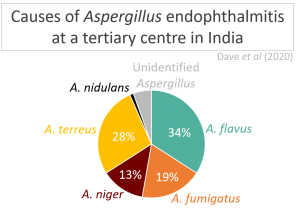Submitted by Aspergillus Administrator on 5 January 2011
 |
| Severe flooding in Bundaberg, Australia |
The recent horrific events in Queensland, Australia show how whole communities can be severely effected by flooding – in this case the area effected is larger than Britain & Germany combined! Many buildings have been swept away but many more have stood up to the force of water and will remain once the floodwater recedes.
The immediate problems are of course loss of roads leading to difficulties in providing food and water to those affected. There are also a number of severe challenges ahead for people living in these areas. The climate is warm and humid and is thus susceptible to various tropical diseases where water is an important factor in transmission. Mosquito’s and all the diseases they can carry may well become a danger as pools of water settle and stagnate (e.g. Dengue fever), ‘dirty water’ diseases will be a big risk e.g. diarrhoea. If that wasn’t enough venomous snakes are also being carried down the rivers into people’s houses.
Unfortunately almost as bad is what comes next. As the flood waters recede there will be a lot of very wet buildings full of soaked possessions & furniture. Many of the houses will be wooden. These conditions are perfect for moulds to grow and they will everywhere they can. These floods have already lasted days so the moulds will already be growing in massive numbers – there is a huge amount of restoration work that needs to be done. Anything absorbent will have to be discarded, building materials stripped back and replaced, cleanable surfaces sterilized. It will not be advisable for anyone to resume living in these homes until this is carried out.
Aspergillus Website has guidelines for damp buildings including extensive advice from several sources on how to clean up flooded houses (including advice given to residents of New Orleans after the major floods that occurred there in 2005 after Hurricane Katrina), facemasks to protect people from fungal spores and videos of talks by Prof Malcolm Richardson on how to treat mouldy houses ( Video 1 (Rome meeting), Video 2 (Patients meeting)).
Can any of this mould damage be avoided? Unfortunately the only way to cut down on mould growth is to dry out the material it is growing on. The mould spores are ever present in the air so there is no way of preventing them landing on moist food sources. Once established the moulds will produce more spores which will be released into the air and so on until everything has dried out.
What are the risks to human health? There are severe risks for people with asthma & allergies that their conditions will be aggravated – see this recent review. People with compromised immune systems are at risk from infections e.g. transplant patients, people on high dose steroid treatment and others.
Disastrous floods like this most recent event in Australia cause health problems for many years to come and provision needs to be made for this.
News archives
-
Title
Date


